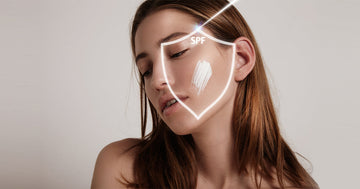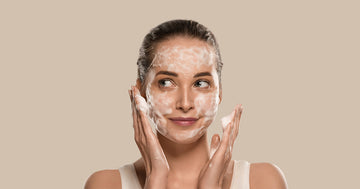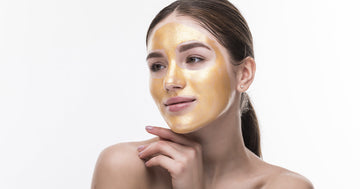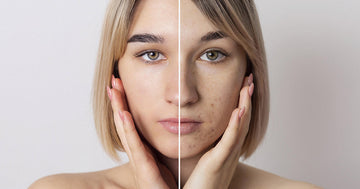Is applying sunscreen once in the morning enough to shield you all day? Think again. Most people underestimate the science behind sunscreen application, leaving their skin exposed and vulnerable to the sun’s harmful rays. Our blog, “Sunscreen Application Tips for Maximum Summer Protection,” unpacks the smartest, most effective ways to apply sunscreen and ensure you’re fully covered this summer.
This isn’t just another generic SPF article; this guide dives deep into real application techniques, reapplication rules, and lifestyle-specific tips (like what to do if you're sweating or swimming). Whether you're using a cream, spray, or gel, how you apply it directly impacts how well it protects your skin.
In a season where UV rays are at their peak, even the smallest sunscreen mistake can lead to sunburns, uneven tanning, or long-term skin damage. This blog will teach you how much sunscreen to use, where to apply it (yes, you’re probably missing spots), and why timing is everything regarding sun protection.
Perfect for skincare beginners and seasoned SPF users alike, this article helps ensure you’re not just applying sunscreen but applying it correctly. Ready to level up your sun safety game? Let’s dive in.
Why Sunscreen Application Matters More Than You Think
Sunscreen isn’t just a cosmetic; it’s your skin’s barrier against harmful UVA and UVB rays. UVB rays cause sunburn, while UVA rays penetrate deeper, leading to premature aging and skin cancer. With its tropical climate and intense sunlight, India often experiences a UV index above 10 in the summer months, which is considered "very high" or "extreme" by WHO standards.
Improper application can reduce sunscreen effectiveness by up to 50%. Understanding and following correct sunscreen application techniques is crucial for preventing irreversible skin damage.
Choosing the Right Sunscreen for Maximum Protection
1. Understand SPF Levels
SPF stands for Sun Protection Factor. An SPF 30 block blocks about 97% of UVB rays, while an SPF 50 block blocks approximately 98%. Dermatologists recommend SPF 30 or higher for daily use in summer.
2. Look for Broad-Spectrum Protection
Ensure your sunscreen protects against both UVA and UVB rays. Ingredients such as zinc oxide, titanium dioxide, avobenzone, and mexoryl SX provide broad-spectrum coverage.
3. Pick the Right Formula for Your Skin Type
-
Oily skin: Gel-based or water-based sunscreens.
-
Dry skin: Cream-based sunscreens with hydrating ingredients.
-
Sensitive skin: Mineral sunscreens (physical blockers) are gentler.
Sunscreen Application Tips for Face and Body
1. Apply on Clean, Dry Skin
Sunscreen should be the last step in your skincare routine before makeup. Apply it to dry skin for proper absorption.
2. Use the Right Amount
Dermatologists recommend:
-
1/2 teaspoon for the face and neck
-
1 ounce (about a shot glass) for the entire body
Most people use only 25-50% of the recommended amount, significantly reducing protection.
3. Don’t Forget Commonly Missed Spots
Pay attention to areas often overlooked:
-
Ears
-
Neck and back of the neck
-
Tops of feet
-
Back of hands
-
Hairline and scalp (especially if you have thinning hair)
Timing and Reapplication Tips
1. Apply 15-30 Minutes Before Sun Exposure
Chemical sunscreens need time to bind to the skin. Applying them right before stepping out reduces their effectiveness.
2. Reapply Every 2 Hours
Despite SPF, sunscreen wears off due to sweat, rubbing, or water exposure. Reapply every 2 hours, and more frequently if you're sweating heavily or swimming.
3. Reapply Over Makeup
Use sunscreen sprays, powders, or SPF-infused setting sprays to touch up over makeup without ruining your look.
Sunscreen Tips for Different Summer Activities
1. For Beach or Pool Days
-
Use water-resistant sunscreen labelled for 80 minutes.
-
Reapply after towel drying.
-
Choose SPF 50+ for extended sun exposure.
2. For Outdoor Sports or Hiking
-
Use sweat-resistant, non-comedogenic formulas.
-
Consider a sunscreen stick for easy reapplication on the go.
-
Wear a hat and UV-protective clothing as backup.
3. For Daily Commutes and Indoor Exposure
-
Yes, you need sunscreen even indoors! UVA rays penetrate windows.
-
Choose lightweight SPF 30+ formulas for daily wear.
Myths About Sunscreen You Need to Stop Believing
Myth 1: Darker skin tones don’t need sunscreen
Truth: Melanin offers some protection, but not enough. Hyperpigmentation and skin cancer still occur.
Myth 2: Makeup with SPF is enough
Truth: The SPF in makeup is not applied in sufficient quantity. It doesn’t replace actual sunscreen.
Myth 3: You don’t need sunscreen on cloudy days
Truth: Up to 80% of UV rays penetrate clouds. Always wear sunscreen.
How to Choose Sunscreen for Kids and Babies
-
Use physical sunscreens with zinc oxide or titanium dioxide.
-
Avoid oxybenzone and fragrance for sensitive skin.
-
Dress babies under 6 months in protective clothing and limit sun exposure.
Best Practices for Storing and Using Sunscreen
-
Store in a cool, dry place. Heat can break down active ingredients.
-
Check expiry dates; expired sunscreen loses effectiveness.
-
Replace sunscreen every season if used frequently.
Conclusion: Don’t Just Wear It, Apply It Right
In the scorching heat of summer, sunscreen is your best defence, but only when applied correctly. From choosing the right SPF and formula for your skin type to reapplying it diligently, mastering sunscreen application is the secret to healthy, youthful, and protected skin. Use these sunscreen application tips for maximum summer protection to ensure you're covered literally and figuratively.
Proper use of sunscreen prevents painful sunburns and guards against long-term damage, such as pigmentation, fine lines, and skin cancer. Don't just wear sunscreen; use it wisely, thoroughly, and consistently. Your future self will thank you for it.







